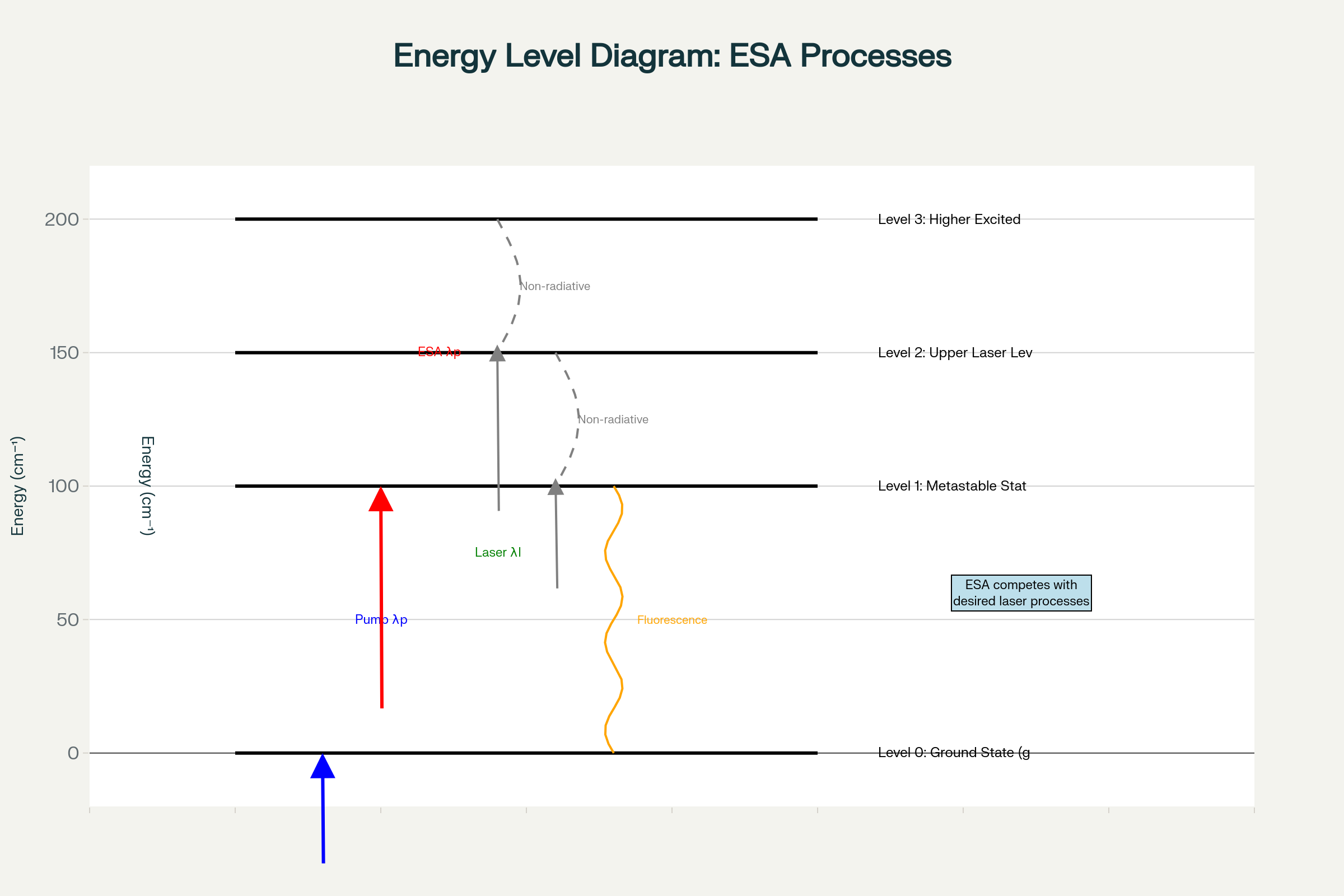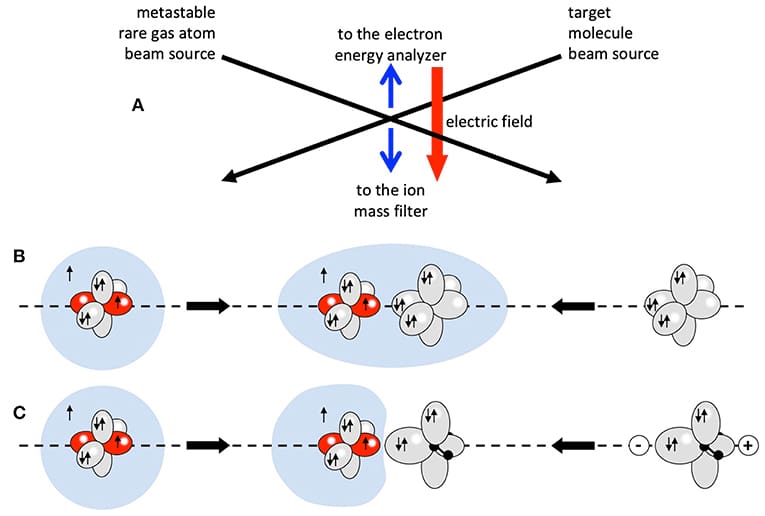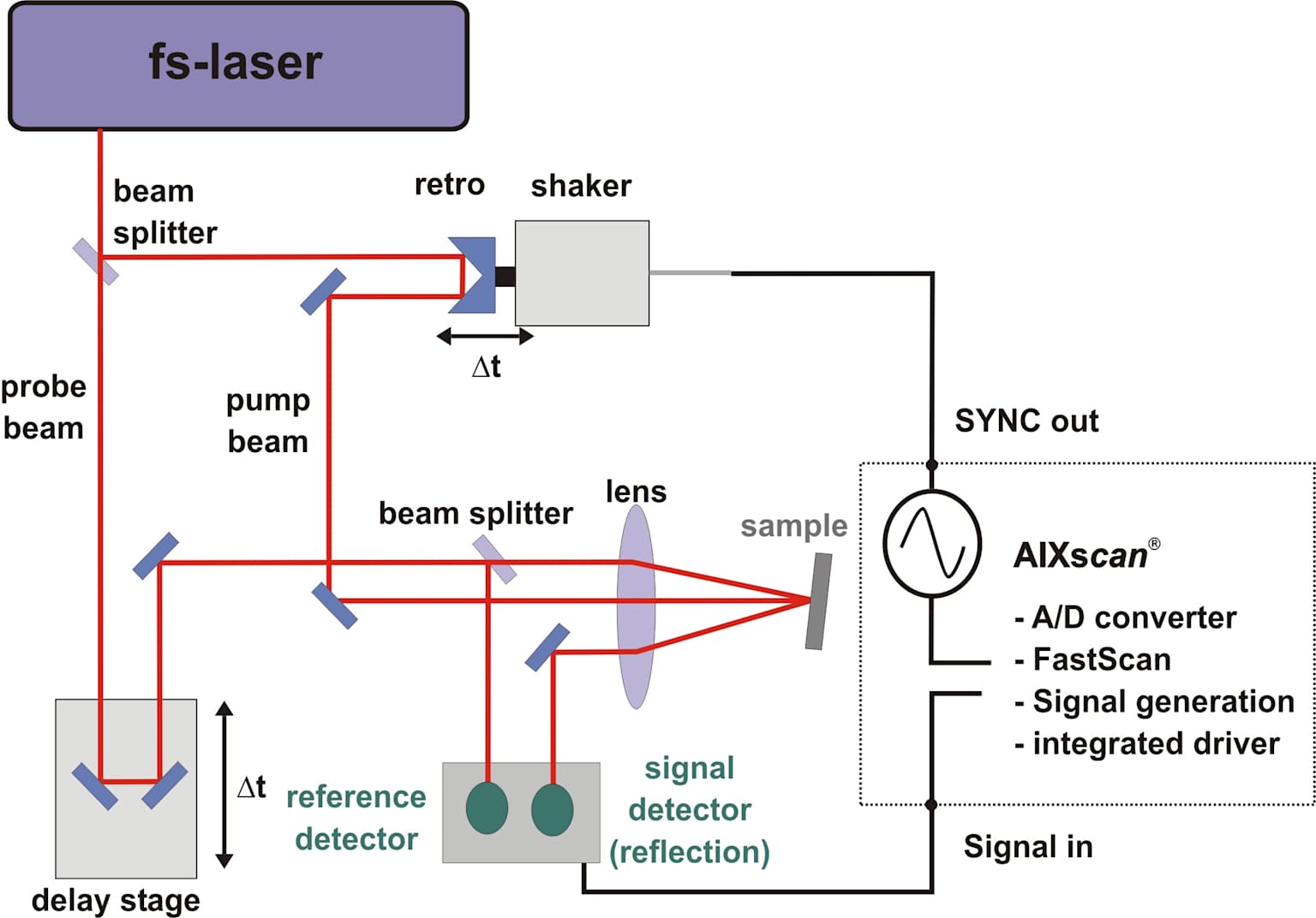Excited-state absorption (ESA) is a fundamental optical phenomenon. It greatly influences modern laser systems and optical amplifiers’ performance. This guide looks at ESA’s physics, effects, applications, and measurement methods. It offers insights to optimize laser system design and performance.
Excited-state absorption happens when atoms, ions, or molecules in already excited electronic states absorb extra photons. They get promoted to higher energy levels instead of doing stimulated emission. Unlike ground-state absorption, ESA needs pre-existing excited-state populations. It’s a competing pathway that affects laser efficiency and performance.
ESA shows up when two key conditions meet. First, there must be one or more higher-energy levels at right energy distances above an existing excited state. This ensures photon energy matches transition needs based on incident light’s wavelength. Second, an substantial population must be in the excited starting level. ESA gets suppressed if the starting level can’t keep a significant population due to very short lifetimes.

The second condition is easier to meet when the starting energy level has metastable characteristics. That means it has a relatively long lifetime for population buildup. Metastable states are common in rare-earth-doped laser materials. Here, some electronic transitions are “forbidden” or “weakly allowed” by quantum mechanical selection rules. So lifetimes are from microseconds to milliseconds, not the usual nanoseconds of normal excited states.

On solid-state laser gain media, ESA creates a competing pathway against laser amplification. When population in the upper laser level should help stimulated emission, ESA processes can absorb pump and laser radiation. They excite ions to higher energy levels that don’t help laser output.
An example was in early erbium-doped fiber amplifiers (EDFAs) pumped with 808 nm laser diodes. At this wavelength, pumping not only filled the upper laser level but also caused strong ESA to higher levels. This cut system efficiency a lot. The solution was switching to 975 nm pumping. Here, ESA cross-sections are small. This removed the loss mechanism and let EDFAs be used widely in telecommunications.
ESA brings extra losses that affect key laser parameters:
Threshold pump power: Goes up because more population inversion is needed to overcome ESA losses.
Slope efficiency: Drops because pump energy is diverted to non-productive channels.
Thermal loading: Gets stronger from non-radiative decay of ESA-populated levels.
These effects are more obvious in systems needing high pump intensities, like quasi-four-level laser systems. ESA’s wavelength dependence also lets us optimize by choosing pump and laser wavelengths with small ESA cross-sections.
ESA shows differently in different laser materials. Rare-earth-doped crystals, with relatively narrow-bandwidth transitions, usually have less serious ESA effects than transition-metal-doped systems. But ESA matters more for rare-earth ions with complex electronic level structures, like erbium or thulium. Their multiple electron levels create many ESA pathways.
Ytterbium-doped systems are an exception. Yb³⁺ ions’ simple electronic structure lacks intermediate levels for strong ESA processes. This helps ytterbium-doped fiber lasers’ good performance and explains their wide use in high-power apps.
ESA is important in saturable absorber materials like Cr⁴⁺:YAG. In these, ground-state absorption can be fully bleached under strong light. But ESA stays at high optical intensities and recovers faster than ground-state absorption. This creates non-saturable losses that make up a big part of total saturable losses, especially for nanosecond pulses where ESA’s faster recovery time shows.
Even though ESA is usually bad, it can be used in upconversion laser systems. Here, the goal is to make shorter-wavelength output from longer-wavelength pumping. In these apps, ESA is key to fill higher energy levels that single-photon absorption can’t reach.
Thulium-doped upconversion lasers are a good example. These systems use ESA transitions to get blue (~480 nm) emission by designing the pumping scheme and energy level structure well. The process needs absorbing multiple photons one after another. ESA lets us access the upper levels for visible emission.
Successful upconversion laser design needs rate equation modeling. It should include ESA cross-sections and intermediate energy level lifetimes. Optimization means balancing ESA efficiency against processes like multi-phonon relaxation and energy transfer upconversion. These can limit upconversion’s effectiveness.
Measuring ESA cross-sections is harder than ground-state absorption measurements. It needs pre-existing excited-state populations. The common experimental method is an pump-probe technique. It uses a modulated pump beam to make time-varying excited-state populations. At the same time, it monitors sample transmission changes with a probe beam.
The experimental setup usually has these components:
Pump laser: Often modulated at kilohertz frequencies to make population modulation.
Sample holder: Keeps proper temperature and pressure conditions.
Probe laser system: With wavelength tunability for spectroscopic measurements.
Monochromator: For wavelength selection and spectral analysis.
Photodetector: Detects small transmission changes sensitively.
Lock-in amplifier: Recovers signals from noise using phase-sensitive detection.

The spectral measurements show the difference between laser gain and ESA contributions. But we need careful analysis to separate these from other energy levels’ contributions. Using lock-in detection, referenced to the pump modulation frequency, gives the sensitivity to detect small ESA-caused changes in probe transmission.
For many laser systems, ESA can be added to performance models by changing existing rate equations. In simple cases, pump or signal ESA shows as extra absorption terms. Especially when ESA transitions lead to levels that quickly relax to the upper laser level through non-radiative processes.
More complex cases, like in thulium-doped systems with complicated level schemes, need advanced rate equation modeling. It should account for multiple competing processes like ESA, energy transfer upconversion, and cross-relaxation mechanisms.
ESA’s contribution to thermal loading needs careful thought. The extra heat generation can affect laser performance through thermal lensing and temperature-dependent parameter changes. The thermal fractional loading from ESA must be in comprehensive thermal models. This way, we can predict system behavior under high-power operation accurately.
The best way to minimize ESA impact is to choose pump and laser wavelengths with small ESA cross-sections. This needs full spectroscopic characterization of candidate materials across relevant wavelength ranges. It helps make informed design decisions to avoid bad spectral regions.
Different pumping geometries can cut ESA effects. Double-end pumping, for example, can roughly halve pump ESA’s impact compared to single-end pumping. It distributes pump intensity and reduces local population inversion levels. Side pumping has more potential to reduce ESA. It distributes pump energy more and avoids high-intensity regions where ESA is most problematic.
Advanced material engineering methods, like choosing host matrices and dopant concentrations carefully, can minimize ESA effects while keeping good laser properties. Low-doped crystals often have less ESA impact because ion-ion interactions are reduced. But this must be balanced against lower absorption efficiency and longer crystal length needs.
As quantum technologies develop, understanding and controlling ESA is more important for apps that need precise control of atomic and ionic states. ESA characterization will be key in developing quantum memory devices, single-photon sources, and quantum communication systems based on rare-earth-doped materials.
New laser architectures, like multi-wavelength systems and adaptive laser designs, need advanced ESA modeling to optimize performance in different operating conditions. Developing machine learning approaches for ESA prediction and compensation is a promising research direction.
Excited-state absorption is a fundamental process that greatly influences many laser systems and optical devices. While it’s usually bad for conventional laser operation, ESA can be used in special apps like upconversion lasers. Understanding ESA mechanisms, measurement techniques, and mitigation strategies helps make more efficient laser systems. It also opens up new apps in quantum technologies and advanced photonic systems.
Laser technology’s progress depends on fully understanding and controlling ESA processes. By paying attention to ESA in system design, wavelength selection, and thermal management, we can use laser gain media’s full potential and reduce bad effects.
Contact: Jason
Phone: +8613337332946
E-mail: [email protected]
Add: Hangzhou City, Zhejiang Province, China